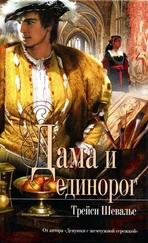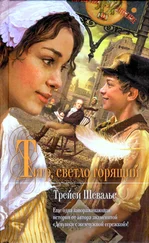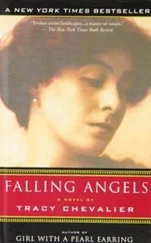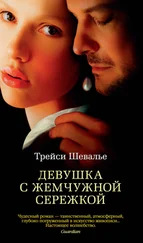Robert took up his rake again and pulled the hay into a pile that would eventually grow into a haystack. He asked no more questions, for he had no interest in pursuing rumors about giant trees that had not actually been verified by eyes on trunks. The other man could easily be repeating descriptions of redwoods Robert had seen along the coast. Anyone would remark on their height and call them giant. Robert had seen trees he estimated were at least 350 feet high. And a trunk three times the width of the average redwood: what did average mean? Robert had seen tall redwoods and also small ten-year-old trees that were like pines but with red bark.
Yet the man’s words stayed with him. Vague about the size, he was at least clear that the location was up in the hills of the Sierra Nevadas rather than down on the coast. Robert had not seen redwoods further than fifty miles from the ocean, and puzzled over the idea that there could be any so far inland.
When the harvest was done and it came time to move on, he did not go north or west to look for work, but headed south and east, crossing the Mokelumne and Calaveras rivers, and reaching the Stanislaus River without even acknowledging to himself that this was his destination. He began to follow it up into the hills towards its source, and soon the rumor was substantiated. “There are giant trees all right,” a man who worked for the Union Water Company told him. “Found by a hunter supplies meat to the company. Was chasing a grizzly up there and came upon a grove of the biggest trees anyone’d ever seen. He’s dined out on that story for the past year. Thought everybody had heard it by now. Where you been?”
The man had also not seen the trees himself, but could give detailed instructions as to how to find the grove, which convinced Robert there was something to the story. He still thought the trees must be the redwoods he was familiar with, just unusually wide ones, and far from the coast.
As he got closer to Calaveras Grove, talk grew louder and louder until it seemed every person Robert met couldn’t wait to tell him about the mammoth trees. It was strange that no one had actually taken the time to go and see them. But then, Robert knew others didn’t care about trees in the way that he did. Finally he reached Murphys, a mining town set up by the Union Water Company about fifteen miles from the grove, and there found someone who had visited the trees. The man said little about them. “You got to see for yourself,” he explained, shaking his head as if disbelieving his own memory. “I can’t describe ’em.”
In the morning he saddled his horse-an unpredictable speckled gray he’d bought off a miner after Bolt, his constant companion since Texas, got stolen by Indians. He hadn’t named the gray, and wasn’t sure he ever would, since naming something tied you to it and made it more painful to lose, as he’d discovered with Bolt. Apart from his other caprices, the gray was not fond of climbing higher than foothills and balked and sidestepped much of the way up to Calaveras Grove. The road was in surprisingly good condition, for two brothers had staked a claim on the land where the giant trees grew and built the road for the visitors they intended to attract.
When Robert arrived at the edge of Calaveras Grove, he dismounted and stood, hand on his horse’s neck anchoring him. In his travels Robert had seen many things that had given him an ache deep in his chest, like a splinter of sadness needling into his heart: prairie that swept far out of sight; a single elm tree that made the sky behind it seem like the bluest he’d ever witnessed; a tornado cycling across the green-gray horizon; snow-covered mountaintops that hung overhead like white triangles. Now he was seeing another.
Two enormous trees stood on either side of the track, a natural entrance to the wood beyond. They were not as tall as redwoods Robert had seen on the coast, but they were much wider-as wide at their bases as a cabin. They dwarfed a person with their girth and the volume of wood they thrust towards the sky. If you stood far enough back to take in the whole of the trees, you didn’t feel how enormous they were. If you came up close, though, you couldn’t see their lowest branches.
Robert left the gray and walked up the path, feeling as he did that he was shrinking into a speck beside the two trees. He put a hand on one to steady himself. The tawny red surface was spongy and thickly fissured, a fibrous bark that shed easily and turned into red dust Robert later found in his clothes and his hair, under his fingernails, on the back of his neck, in his saddlebags. The forest floor around the trees was thick and springy with thousands of years of rotting needles, muffling his steps. And it was quiet, for there were no branches anywhere near him to rustle in the wind. Branches only started to grow from about a hundred feet up, and the bulk of them were so high over his head that it strained his neck to look at them for long. They were small in proportion to the gigantic trunks.
Robert had no words for the awed, hollowed-out feeling that swelled inside him.
The speckled gray did not like the trees. Robert might admire them, but the horse saw anything outside the normal range of nature as a threat, and protested by snorting and stamping and rolling his eyes. Robert had to catch the reins-the gray kicking at him as he did-and lead him away to a spot out of sight of the giant trees, among the ordinary evergreens. There he hitched him to a young fir, away from the larger sugar pines, which sometimes let drop their heavy sticky cones that could break bones. It took some time to calm the horse.
When he was quiet at last Robert left him and went back to the grove. It was also full of pines, but dotted among them were the gigantic trees, some nearby, some in the distance. Many of them were as big if not bigger than the sentinels at the entrance. The grove was no longer quiet and empty as it had been when he’d arrived. Some of the men who had described Calaveras Grove to Robert had mentioned that there was work going on up there: the owners were building a hotel for visitors to stay in, as well as other attractions. To get deeper into the grove Robert had to go past a group of men who had just appeared and begun to hammer and shout. He moved reluctantly towards them.
Then he saw the stump, looming several feet above him. A ladder leaned against it, and Robert climbed up and gazed at the surface. It was twenty-five feet across and rough, though a man was busy filing it smooth while two others were building a set of stairs that would take people more easily to the top of it. Robert studied the hundreds of rings radiating out from the center. He did not step onto the stump, vowing to himself that he never would.
His vantage point at the top of the ladder allowed him to look around. From there he could see the whole of a long, long trunk of a tree, extending from where it had been felled far into the woods, so large that Robert had not even noticed it when he walked past it. Closest to him the bark had been stripped, and the trunk looked naked and vulnerable. Further along it other men were scrambling around, building on top of it a basic cabin and a long low house, with the trunk serving as the floor.
Robert climbed back down from the stump and walked around it. Next to it was a huge chunk of the trunk, almost three times Robert’s height, that had been cut from the rest of the tree and isolated. Nailed to the side was a hand-painted sign reading “Chip Of the Old Block.” Its flat surface was scored with deep grooves, made, Robert supposed, by whatever they used to cut down the tree. He could not imagine how that had been done, and the small part of him that was not horrified by the desecration was fascinated by this technical challenge.
Now he followed the full length of the trunk, counting over a hundred paces from the stump to the jagged end where the tip must have shorn off as it fell. He hailed one of the workers to ask what they were building, and discovered the structures would soon be a saloon and a bowling alley. Robert had been many places, but had never heard of a bowling alley. According to the worker, they had them back east.
Читать дальше







![Трейси Шевалье - Тонкая нить [Литрес]](/books/386177/trejsi-shevale-tonkaya-nit-litres-thumb.webp)




